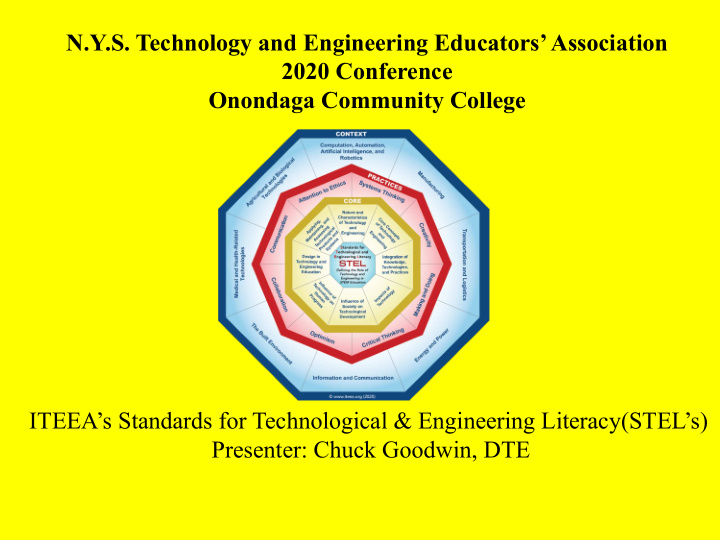



N.Y.S. Technology and Engineering Educators’ Association 2020 Conference Onondaga Community College ITEEA’s Standards for Technological & Engineering Literacy(STEL’s) Presenter: Chuck Goodwin, DTE
Draft Framework of the N.Y.S. M-S-T Learning Standards 1994
The Premise For Creating the NYS MST Learning Standards The study of mathematics, science and technology is critical, so that ALL students are able to: Use various ways of asking questions, seeking answers, and designing solutions while applying a full spectrum of problem solving strategies. Think in terms of systems and learn to analyze problems holistically Process information by retrieving, analyzing, and synthesizing Use, apply, and make informed decisions on the products and processes of Mathematics, Science and Technology for health, security, communication, transportation, environmental stewardship, work, and for pleasure and human development. Be better prepared for jobs and careers, the vast majority of which will involve one or more of these disciplines.
NYS MST Learning Standards Approved in 1996 & 2000 with Seven Standards Including Standard 3 – Mathematics • Standard 4 – Science • Standard 5 - Technology •
Each standard has its own set of: Key Ideas: Engineering Design, Technological Sys., Impacts of Technology, • Tools, Resources, Processes, History & Evolution of Tech. Performance Indicators: What students should be able to do to • demonstrate their learning. Sample Tasks: Suggested classroom activities you can try or modify •
Standards as a Catalyst For Change!? Assessments as a Catalyst For Change? Pre-service exposure and instruction as a Catalyst For Change? Inservice Exposure and instruction as a Catalyst For Change? Conferences • Supts. Programs • Regional Assoc. • Online Programs
Next Generation Science Standards Practices
Recommend
More recommend